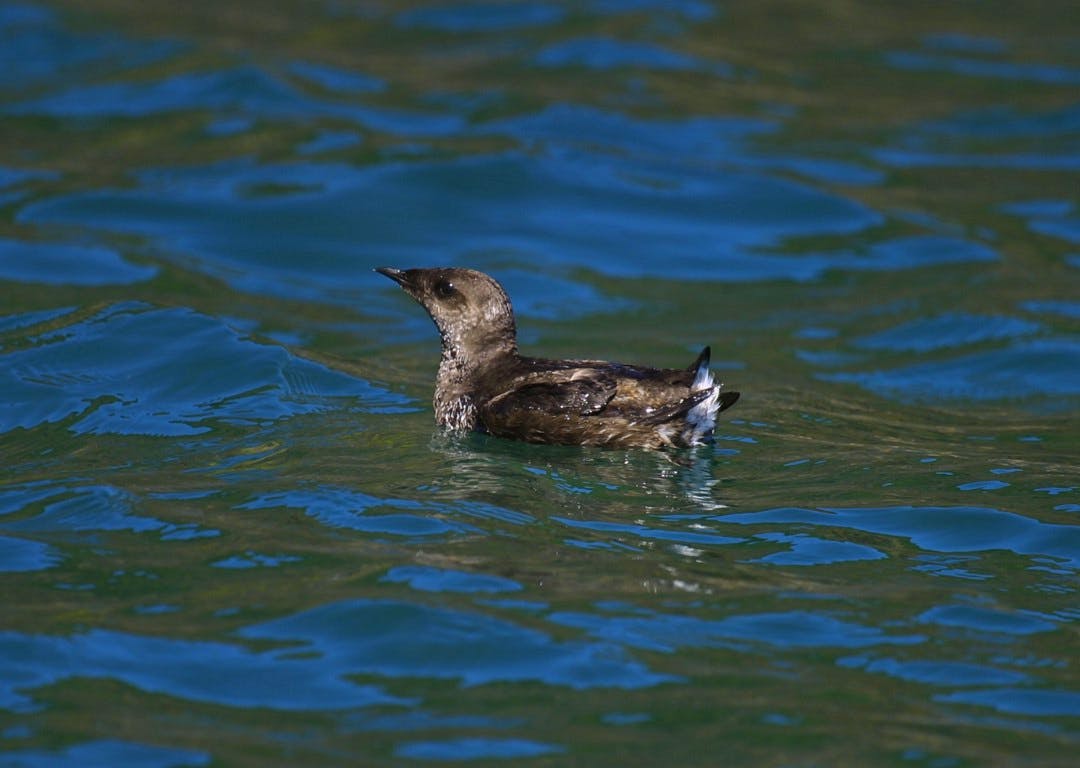Third Time Could be the Charm
Are things finally about to change for the better for the marbled murrelet in Oregon? 2018 was a challenging year for the elusive little bird after a controversial decision by the Oregon Department of Fish and Wildlife Commission last year to not uplist the species from threatened to endangered status under the Oregon Endangered Species Act (a decision that is currently under litigation). But there is a glimmer of hope in 2019 from the Oregon Department of Forestry. In 2016, the Board of Forestry (Board) was petitioned by a group of conservation organizations to consider listing marbled murrelet habitat on forested lands along the Oregon coast as “specified resources sites” under the Forest Practices Act. This designation would protect murrelet habitat from unsustainable forest management practices and provide baseline protection for the bird’s population in Oregon. The Board directed the Oregon Department of Forestry (ODF) to conduct an assessment and present their key findings to the Board to evaluate for possible rule-making on such site designation. ODF presented its technical assessment report to the Board in April 2019 where Defenders, along with other conservation organizations, testified in support of adopting the report. The Board’s final decision to adopt the report starts a cascade of decision-making steps to determine ways to identify and protect murrelet nesting sites while minimizing impacts on livelihoods of communities.
The marbled murrelet is listed as a threatened under the federal Endangered Species Act (ESA) and endangered under the Washington and California state ESAs. Oregon is the only state on the Pacific coast where the bird is listed as threatened under the state ESA. Marbled murrelets are small, secretive seabirds from the auk family. Often referred to as “fog lark” by coastal communities, it is one of the few seabirds that nests in forested environments, and they are very specific at that — they tend to nest on mossy limbs of old-growth conifer forests. It is this specific habitat niche that makes marbled murrelet conservation a challenge in a state where timber harvest is still one of the main livelihood.
ODF’s technical report was meant to highlight the kind of protection marbled murrelet habitat would need on forested land, if it is designated as a specified resources site, and the potential conflict it might generate with current land uses like timber harvesting. Sadly, while the report does a good job of describing the ecological and biological needs of the murrelet, it falls short with its recommendations for a few reasons:
First, the report undermines prescriptive approaches in favor of voluntary approaches in conserving murrelet habitat on forested lands. While voluntary approaches can play a strong supplementary role in conservation efforts, they cannot be a stand-alone tool. Prescriptive protections are needed to provide baseline protection for nesting marbled murrelets in addition to voluntary programmatic approaches to help landowners.
Second, the report emphasizes the policy and economic burden the agency and the Board will have to undertake, especially with regards to identifying murrelet nesting sites but it does not give much consideration to the already established, scientifically-vetted survey methodology developed by the Pacific Seabird Group (PSG). PSG’s survey methodology is used both for academic and commercial purposes and is regularly updated to reflect the current science on murrelet habitat. The PSG protocol will therefore eliminate a lot of the “challenges” identified in the report and should be strongly considered for adoption.
Finally, the report also hesitates in making stronger recommendations on the grounds that there isn’t enough scientific data available. The argument itself feels like selective science when the same report disregards current science in the aforementioned PSG protocol. It is true that we will benefit from more data, but that should not be the reason for not conserving a species that is already listed as threatened and/or endangered at a federal and state level. New data is supposed to inform us, but the decisions that are made today have be based on what is available NOW instead of focusing on what is not. Uncertainty is an integral part of scientific research because research is a dynamic process where results are derived on the highest likelihood or probability but is never conclusive. When it comes to the fate of a vulnerable species like the murrelet, a precautionary approach is warranted.
The report therefore leaves a few gaps in developing an effective conservation strategy but it is a concise assessment of murrelet ecology and conservation needs. It also gives the Board of Forestry potential options on the direction to move forward with the rulemaking. And its acceptance by the Board is a small victory on a long path to protecting murrelet habitat in Oregon. For today, we are celebrating the fact that Oregon Department of Forestry and its Board is taking a step in the right direction in the conservation of marbled murrelet for current and future generations of Oregonians.









